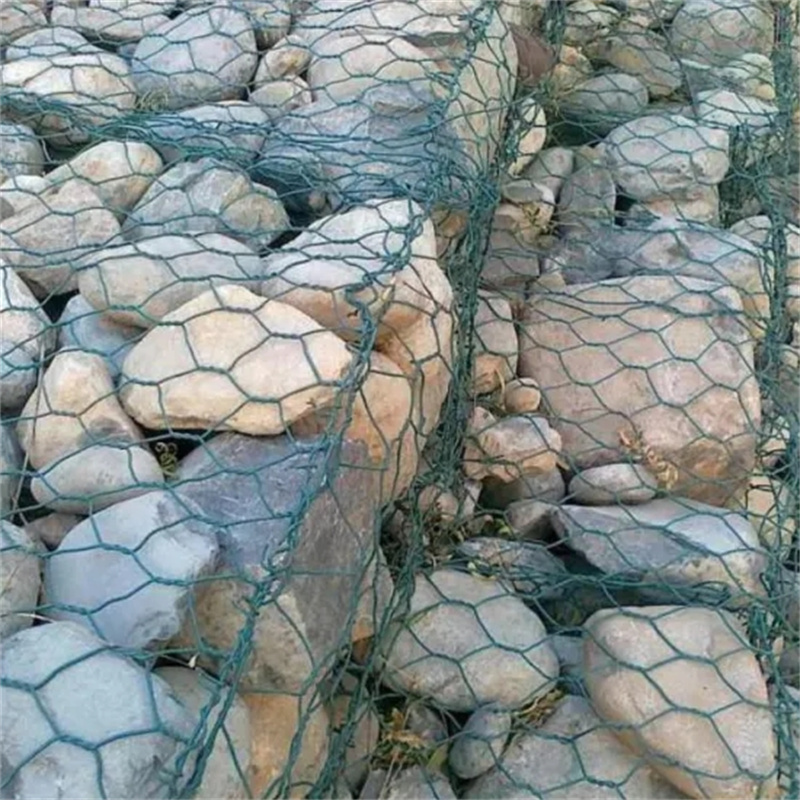Dec . 24, 2024 23:46 Back to list
High-Quality Gabion Mesh Cage Manufacturing for Versatile Application Needs
The Significance of Gabion Mesh Cages in Modern Engineering
In recent years, the use of gabion mesh cages in construction and landscaping has surged in popularity, thanks to their versatility and effectiveness in various applications. Gabions—wire mesh cages filled with rock, stone, or other materials—are not only aesthetically pleasing but also play a crucial role in preventing soil erosion, managing water runoff, and creating durable structures. This article will explore the significance of gabion mesh cages, particularly focusing on their manufacturing process and applications.
Understanding Gabion Mesh Cages
Gabion mesh cages are typically constructed from galvanized steel wire or PVC-coated wire, ensuring durability and resistance to rust and corrosion. The term gabion is derived from the Italian word gabbione, meaning big cage. This description aptly fits their structure, as gabion cages serve as containment units for various materials. When filled, these cages provide exceptional strength and stability, making them ideal solutions for environmental challenges.
Factory Production of Gabion Mesh Cages
The production of gabion mesh cages begins in specialized factories where raw materials are processed and transformed into functional units. The manufacturing process involves several steps wire cutting, mesh weaving, and cage assembly. Factories utilize advanced machinery to ensure precision and efficiency in production. After the cages are formed, they are subjected to rigorous quality control measures to ensure they meet industry standards.
The utilization of durable materials is a hallmark of gabion mesh cage factories. Galvanization and PVC-coating provide additional protection against harsh weather conditions, which is essential for applications in outdoor environments. The commitment to quality in manufacturing translates into increased lifespan and reduced maintenance costs for end-users.
gabion mesh cage factory

Versatile Applications
Gabion mesh cages have a wide array of applications, making them invaluable in various sectors. One of the most common uses is in erosion control. By placing gabion walls along riverbanks, slopes, or hillsides, engineers can minimize soil erosion caused by water runoff. The stones within the cages absorb and deflect water, significantly reducing its velocity and impact on the soil.
Additionally, gabions are used extensively in construction for retaining walls and sound barriers. Their inherent flexibility allows them to be adapted to various shapes and sizes, making them ideal for creating custom structures. In landscaping, gabion cages can be aesthetically designed to blend seamlessly with natural surroundings, often being used in garden walls, planters, and fencing.
Environmental Benefits
Furthermore, gabion mesh cages are considered environmentally friendly solutions. They are made from natural materials, which means they can blend into the ecosystem without disrupting local flora and fauna. The porous nature of the cages allows for water drainage, reducing the risk of water accumulation and subsequent flooding. This feature is particularly beneficial in regions prone to heavy rainfall.
Conclusion
In conclusion, gabion mesh cages represent a unique fusion of form and function in modern engineering and landscaping. Their manufacturing process, characterized by quality and durability, ensures they withstand the test of time. With versatile applications spanning erosion control, construction, and aesthetic design, gabions are more than just practical solutions; they are sustainable choices that contribute positively to the environment. As the world continues to face environmental challenges, the use of gabion mesh cages will likely increase, positioning them as essential components of tomorrow’s construction and landscaping projects.
-
HESCO Gabion Baskets for Coastal Erosion Prevention
NewsAug.22,2025
-
Longevity and Durability of River Rock Gabion Walls
NewsAug.22,2025
-
How to Integrate Gabion 3D Walls in Urban Planning
NewsAug.22,2025
-
Reno Mattress Gabion Applications in Civil Engineering
NewsAug.22,2025
-
How to Install Wire Mesh for Gabion Baskets Properly
NewsAug.22,2025
-
Best Materials for Filling a Chain Link Gabion
NewsAug.22,2025
-
Wire Mesh Thickness Impact on Gabion Wall Load Bearing
NewsAug.12,2025






